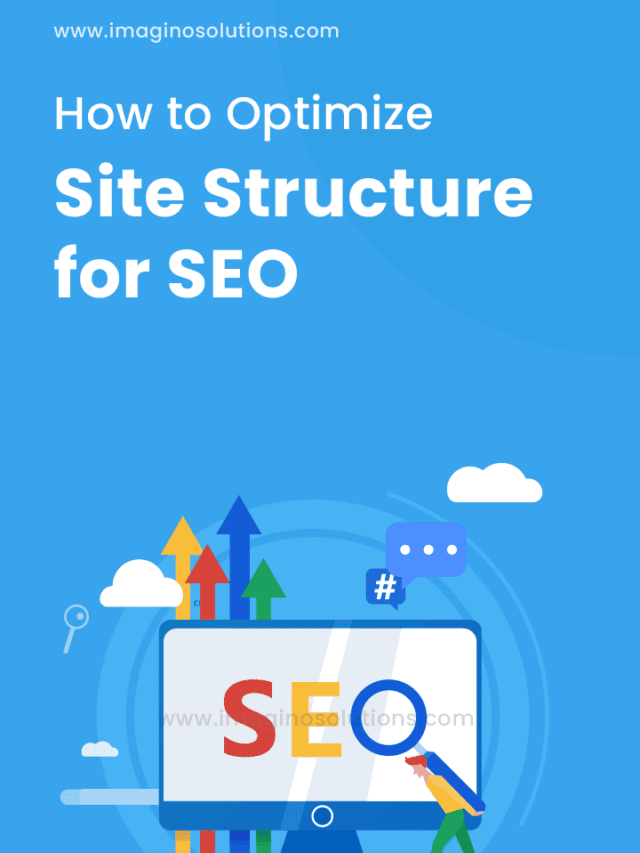6 Ways to Optimize Your Site Structure for SEO
A good site structure is important because search engines use your site structure to find, crawl, and rank content on your website. A well-defined site structure makes the job of search engine crawlers easier, and that helps better indexing and more chances of achieving higher rankings. The structure of a website, blog, or eCommerce store should be user-friendly, easy to navigate, fast, and serve its purposes. A well-optimized site structure can improve the SEO and usability of the website.
How to Optimize your Site Structure
Let’s look at how to optimize your website Site Structure. Here are the steps:
1. Plan your site structure first
Improving the structure of your website is the key to success. It makes sense to define topic sets, specify a column page for each set, and then expand to plan supporting content. If you are starting a new website, then it’s easy to plan the site structure in advance. Your website must have a hierarchical structure – The focal point is the homepage, and then all other pages should be grouped into categories based on their type.
2. Show breadcrumbs
Breadcrumb menus are important for SEO. Google has reiterated the need to have navigation menus on every page so that users can easily navigate the website. The breadcrumb menu should show the structure of the site correctly. Beaconstac‘s Sneh Choudhary also advises to “use breadcrumbs in addition to this to help Google’s crawlers comb through the site better and consequently display sitelinks in SERP.”
3. Link to relevant pages
Pay attention to your internal link structure. One of the ways to strengthen the structure of your site is to use internal links properly. You should o map the flow of ‘page rank’ through your site, including the anchor text you are using to link to each page, which can be quite aggressively keyword-optimized without incurring a Google penalty. Part of this process will be linking between pages that are topically similar. An internal link is a way to pass ‘pagerank’ from strong pages to other pages and make them stronger and give search engines clues about the valuable pages for a website. Quality internal links help to lower bounce rates and increase time on site.
4. URL Structure
The URL is an important part of the Google index and how search engines know what your page is about. There are some simple rules you should follow to keep your URL structure up to date, clean, and informed for browsers. It’s important to use a standard URL structure. Also, make sure your URL should be readable to a human and make sense. It doesn’t have to be perfect English. But in conclusion, The content you expect to see on the web page should be clear.
5. Categorize all pages
After you’ve collected and filtered all the irrelevant keywords, adjust them to your website’s hierarchy. Write down all major sections and visualize the structure, moving to subsections and specific pages. Try to keep your categories the same size. If a category is too big because you have a lot of products or blog posts about that topic, try to break them into two or three categories. Use categories to create content relevancy. This is true, especially for blogs. One of the reasons for creating categories is to build topic relevancy and help Google understand for which topics you want to build authority.
6. Create a sitemap
A sitemap is A document that tells people (and Google) how to navigate around your website. This makes it easier to navigate the site. Don’t forget the search crawler. Sitemaps allow you to track and index every page that appears on your website faster. Search engines can also use the sitemap as a reference when determining canonical URLs. You can create an XML sitemap for crawling purposes that contains a list of all URLs and their hierarchy, and an HTML sitemap for users that will act as an interactive list of all pages. Each search engine has its own instructions for creating and submitting a sitemap file. SEO Ranking Website audit can simplify this process for you and automatically generate a sitemap.
Conclusion
Now we talked about different methods. Since website structure affects SEO, we hope you can reevaluate your website structure. (Or, if you’re just starting out, let’s do it right the first time!) Here’s an overview of how search engines work and best practices for optimizing. We’ve discussed the importance of internal connections and six ways they can help you. If you want to Optimize Your Site Structure or have any doubts, feel free to contact us
If you haven’t done an audit of your site structure yet, then this tool helps you to audit your website http://seoauditor.in/
